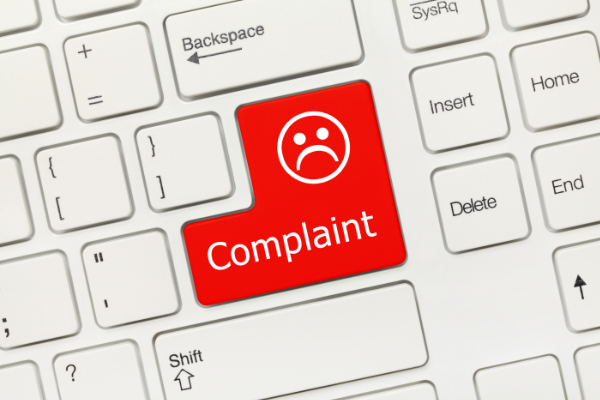Abuse Desk
ESPs need to step up their compliance game
I don’t send a lot of spam complaints generally. Mostly I block and move on. There are some companies, though, that I offer the professional courtesy of sending a complaint or a report to their abuse@ address. Former clients, friends and colleagues generally get that courtesy.
Read MoreComplaints, contacts and consequences
Yesterday the CRM system Zoho suffered an unexpected outage when their registrar, TierraNet suspended their domain. According to TechCrunch, Zoho’s CEO says there was no notification to the company and that the company had only 3 complaints about phishing.
Read MoreCheck your abuse addresses
Even if you have excellent policies and an effective, empowered enforcement team you can still have technical problems that can cause you to drop abuse mail, and so lose the opportunity to get a bad actor off your network before they damage your reputation further.
Read MoreResponding to complaints
I sent in a complaint to an ESP earlier today. This was mail from a major UK retailer to an address that is not used to sign up for mail. It’s part of an ongoing stream of spam related to UK services and products. I believe most of this is because one of the data selling companies has that address associated with someone who is not me.
I did explain I believed this was a purchased address but I’m wondering if I will get a response. The address isn’t one of those I regularly use so there isn’t a connection between “Laura, deliverability person” and “Laura, spam victim.” There are some industry folks who go out of their way to respond to my complaints. That’s always rewarding.
On a more theoretical level, I can make good arguments for responding and good arguments for not responding.
Spam complaints… ish
I know a lot of folks working at ESPs. For those I know well, I will usually send in reports. Sometimes they’re not spam reports per se. Often it’s just “hey, this sender shouldn’t have my address, might want to poke them.”
Sometimes it’s even more specific. A few years ago I spoke at a user conference for an ESP. I stayed at the hotel for one night, and the hotel now has my email address. Not a big deal, they’re on the coast and an easy drive from here. They’ll run specials for the locals, and I like it.
Enter in hotel B. I’ve never stayed at hotel B. I’m not sure who hotel B is. They’re also local and may be the same management. I don’t know. They sent me email to the address I’ve only given to hotel A. Not only that, the message is completely unreadable. Dark blue on brown… not exactly a great design choice.
I wasn’t going to send anything in to the ESP, but then I noticed that at the bottom of the email there is a notice that says “This email was sent to: %%emailaddr%%.” That looks suspiciously like this was an accidental send. The ESP folks there are colleagues, so I sent them an email into abuse@.
Network Abuse
Many years ago, back when huge levels of spam involved hundreds of thousands of emails, there was a group of people who spent a lot of time talking about what to do about abuse. One of the distinctions we made was abuse of the net as opposed to abuse on the net. We were looking at abuse of the network, that is activity that made the internet less useable. At the time abuse of the network was primarily spam; sure, there were worms and some malicious traffic, but we were focused on email abuse.
In the last 20 years, multiple industries have arisen around network abuse. I’m sitting at a conference with hundreds of people discussing how to address and mitigate abuse online. In the context of the early discussions, we’re mostly focused on abuse of the network, not abuse on the network.
But abuse on the network is an issue. It’s a growing issue, IMO. The internet has contributed to the rise and normalization of the alt-right. Social media is a medium used for abuse on the net. Incidents range from bullying of school kids to harassment of celebrities to sharing of child abuse material. All of these things are abuse on the net. They are an issue. They need to be addressed.
Today M3AAWG gave the 2017 Mary Litynski Award to Mick Moran from Interpol for his work in fighting child exploitation and abuse on the net. As I tweeted during the session, I have a phenomenal amount of respect for Mick and people like him who work tirelessly to protect children online. I don’t talk much about child abuse materials*, but I know the problem is there and it’s bad.
One of the discussions I’ve had with some folks lately is how we can better fight abuse on the net. Many of the tools we’ve built over the years are focused on volume – more complaints mean a more serious incident. But in the case of abuse on the net, or who is wrong. volume isn’t really an issue. It’s a hard problem to solve. It’s easy to create a system that lets the good guys get information, but it’s hard to create a system that also keeps the bad guys out and prevents gaming and is effective and values single complaints of problems.
Folks like Mick, and the abuse teams at ISPs all over the world, are integral to finding and rescuing abused and exploited children. Their work is so important, and most people have no idea they exist. On top of that, the work is emotionally difficult. Some of my friends work in that space, dealing with child abuse materials, and all of them have the untold story of the one that haunts them. They don’t talk about it, but you can see it in their eyes and faces.
We can do better. We should do better. We must do better.
*Note: Throughout this post I use the term “child abuse materials” to describe what is commonly called child pornography. This is because porn isn’t necessarily bad nor abusive and the term child porn minimizes the issue. It’s important to make it clear that children are abused, sometimes for years, in order to make this material.
January 2016: The Month in Email
 Happy 2016! We started off the year with a few different “predictions” posts. As always, I don’t expect to be right about everything, but it’s a useful exercise for us to look forward and think about where things are headed.
Happy 2016! We started off the year with a few different “predictions” posts. As always, I don’t expect to be right about everything, but it’s a useful exercise for us to look forward and think about where things are headed.
I joined nine other email experts for a Sparkpost webinar on 2016 predictions, which was a lot of fun (see my wrap up post here), and then I wrote a long post about security and authentication, which I think will be THE major topic in email this year both in policy and in practice (see my post about an exploit involving Trend Micro and another about hijacked Verizon addresses). Expect to hear more about this 2016 continues.
My other exciting January project was the launch of my “Ask Laura” column, which I hope will prove a great resource for people with questions about email. Please let me know if you have any questions you’d like to see me answer for your company or your clients — I’ll obscure any identifying information and generalize the answers to be most widely applicable for our readers.
In other industry news, it’s worth noting that Germany has ruled it illegal to harvest users’ address books (as Facebook and other services do). Why does that make sense? Because we’re seeing more and more phishing and scams that rely on social engineering.
In best practices, I wrote about triggered and transactional emails, how they differ, and what to consider when implementing them as part of your email program. Steve describes an easy-to-implement best practice that marketers often ignore: craft your mails so the most important information is shown as text.
I re-published an older post about SMTP rules that has a configuration checklist you might find useful as you troubleshoot any issues. And a newer issue you might be seeing is port25 blocking, which is important if you are hosting your own email senders or using SMTP to send to your ESP.
Finally, I put together some thoughts about reporting abuse. We work closely with high-volume abuse desks who use our Abacus software, and we know that it’s often not worth the time for an individual to report an incident – but I still think it’s worthwhile to have the infrastructure in place, and I wrote about why that is.
Random thoughts on reporting abuse
 On IRC today, someone mentioned an Ars Technica article discussing how a research team tried to contact Xfinity about a security flaw in their home security system.
On IRC today, someone mentioned an Ars Technica article discussing how a research team tried to contact Xfinity about a security flaw in their home security system.
Know what you're promising, and keep your promises
Although we can’t always provide a personal response to your complaint, we do investigate all reports. Please don’t interpret a lack of response as a lack of action taken. If we find that a customer is violating our policies, we will take make sure they stop the violating activity.
Read More
Where do you accept reports?
One of the things that is most frustrating to me about sending in spam reports is that many ESPs and senders don’t actively monitor their abuse address. A few months ago I talked about getting spam from Dell to multiple email addresses of mine.
What I didn’t talk about was how badly broken the ESP was in handling my complaint. The ESP was, like many ESPs, an organization that grew organically and also purchased several smaller ESPs over the course of a few years. This means they have at least 5 or 6 different domains.
The problem is, they don’t effectively monitor abuse@ for those different domains. In fact, it took me blogging about it to get any response from the ESP. Unfortunately, that initial response was “why didn’t you tell us about it?”
I pointed out I’d tried abuse@domain1, abuse@domain2, abuse@domain3, and abuse@domain4. Some of the addresses were in the mail headers, others were in the ESP record at abuse.net. Three of those addresses bounced with “no such user.” In other words, I’d tried to tell them, but they weren’t accepting reports in a way I could access.
Every ESP should have active abuse addresses at domains that show up in their mail. This means the bounce address domain should have an abuse address. The reverse DNS domain should have an abuse address. The d= domain should have an abuse address.
And those addresses should be monitored. In the Dell case, the ESP did have an active abuse@ address but it was handled by corporate. Corporate dropped the ball and never forwarded the complaint to the ESP reps who could act on the spam issue.
ESPs and all senders should have abuse@ addresses that are monitored. They should also be tested on a regular basis. In the above case, addresses that used to work were disabled during some upgrade or another. No one thought to test to see if they were working after the change.
You should also test your process. If you send in a complaint, how does it get handled? What happens? Do you even have a complaint handling process outside of “count and forward”?
All large scale senders should have appropriate abuse@ addresses that are monitored. If you don’t, well, you look like a spammer.
How to respond to an abuse complaint
There’s a lot of variation in how ESPs respond to a report of one of their customers sending spam. Almost all ESPs will suppress future email to the recipient. Most will also note that there was a complaint about the sender, and use a count of those complaints for reporting, triage and escalation of problems. Beyond that, though, there’s little consistency.
I sent a spam report to abuse@mailchimp last week. The spam was nothing special – it was an advert about bouncy castles from a small company local to me sent to a tagged address used to register a domain that expired several years ago, so I knew someone had purchased a “targeted” list. The mail I sent to mailchimp was just one line, mentioning where the email address had come from and a full copy of the email with headers – again, nothing special.
The response I got back from Meredith was particularly good, so I thought I’d share it.
Amendment is futile, part 2
When Yahoo filed for dismissal of the Holomaxx complaint, they ended the motion with “Amendment would be futile in this case.” The judge granted Yahoo’s motion but did grant Holomaxx leave to amend. Holomaxx filed an amended complaint earlier this month.
The judge referenced a couple specific deficiencies of Holomaxx’s claims in his dismissal.
Letters to the abuse desk
Ben over at Mailchimp has shared some of the mail that comes into the mailchimp abuse desk. It’s a post well worth a read.
One of the things that leaped out at me during that post is that the positive emails highlight how much the Mailchimp delivery and compliance people help their users get good delivery. They’re not just saying “you can’t do that” because they’re mean or they want to make life more difficult for their users. They are saying no because what the user wants to do is a bad idea.
I also appreciated the letter from the customer who had to tell Mailchimp that management had decided to not take Mailchimp’s advice. This is something that happens to me sometimes. Clients agree with my recommendations but management decides that they’re not going to implement them. It can be difficult to watch, particularly when I then see how much that company is struggling with blocks or see them show up on some of the big spam lists. But, it’s also part and parcel of the job. Not everyone, no matter how effectively I make my cases, will take my advice.